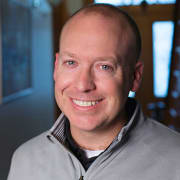Golf’s Governing Bodies Propose Rolled-Back Ball for Elite Events

In response to years of increasing hitting distances in golf that have stretched many courses to their limits and made others obsolete for championship play, golf’s governing bodies proposed an optional rule Tuesday that would have elite players using shorter-flight balls and “bifurcating” the professional and amateur game.
The “Model Local Rule” (MLR) proposed by the USGA and R&A gives competition organizers an option to require golf balls tested under modified launch conditions, in other words balls that don’t fly as far.
Balls that conform to the MLR would not be allowed to exceed a distance standard of 317 yards (plus a 3 yards tolerance) at a set of launch conditions that include a clubhead speed of 127 mph based on a setup of 11 degrees and 2,200 rpm.
That setup is expected to reduce hitting distance by an average of 14 to 15 yards for the longest hitters with the highest clubhead speeds.
Driving distances for professionals have consistently grown over the years. In the 2021-22 PGA Tour season, the average driving distance was 299.8 yards. In 2012 it was 289.1 yards, and in 2002 the average driving distance was 279.5 yards. The USGA’s annual driving distance report also reports a 4 percent year-over-year increase in hitting distance measured across seven pro tours.
“Hitting distances at the elite level of the game have consistently increased over the past 20, 40, and 60 years. It’s been two decades since we last revisited our testing standards for ball distances,” said Mike Whan, CEO of the USGA. “Predictable, continued increases will become a significant issue for the next generation if not addressed soon. The MLR we are proposing is simple to implement, forward-looking and does so without any impact on the recreational game. We are taking the next steps in this process, guided first and foremost by doing what’s right by the entire game.”
Such drastic distance increases have required courses to lengthen holes to better challenge professionals, which costs money in the short term in construction and more long-term in the form of greater maintenance costs and adverse environmental effects. Many courses without the ability to stretch to longer distances are now unable to host pro events.
"At the core of our proposal is a desire to minimize the impact on a flourishing recreational game. We believe the proposed Model Local Rule will help us move forward in a way that protects the inherent qualities of the sport and reduces the pressure to lengthen courses," said Martin Slumbers, CEO of The R&A. "This is an important issue for golf and one which needs to be addressed if the sport is to retain its unique challenge and appeal.”
The term “bifurcation” has been whispered for years in golf, meaning separate rules for amateurs and professionals. The MLR would do that, having professionals play balls that are not available to recreational players.
"We continue to work closely with the USGA and The R&A on a range of initiatives, including the topic of distance," the PGA Tour said in a statement. "Regarding the notice to manufacturers announced today, we will continue our own extensive independent analysis of the topic and will collaborate with the USGA and The R&A, along with our membership and industry partners, to evaluate and provide feedback on this proposal. The Tour remains committed to ensuring any future solutions identified benefit the game as a whole, without negatively impacting the Tour, its players or our fans’ enjoyment of our sport."
The MLR proposal was sent to golf equipment manufacturers on Monday, who can provide feedback along with other golf stakeholders until Aug. 14. If adopted, the proposal would take effect on Jan. 1, 2026.
One major manufacturer, Acushnet Company, responded Tuesday, saying bifurcation "would divide golf between elite and recreational play, add confusion, and break the linkage that is part of the game’s enduring fabric."
Acushnet Company's holdings include Titleist, whose Pro V1 line of golf balls are the sport's best-selling.
“Golf is an aspirational sport, and we believe at its very best when equipment and playing regulations are unified. Golf’s health and vibrancy are at historically high levels,” said David Maher, President and Chief Executive Officer, Acushnet Company. “As we see it, existing golf ball regulations for overall distance and initial velocity are highly effective. ... The proposal of golf ball bifurcation is in many respects a solution in search of a problem.”
